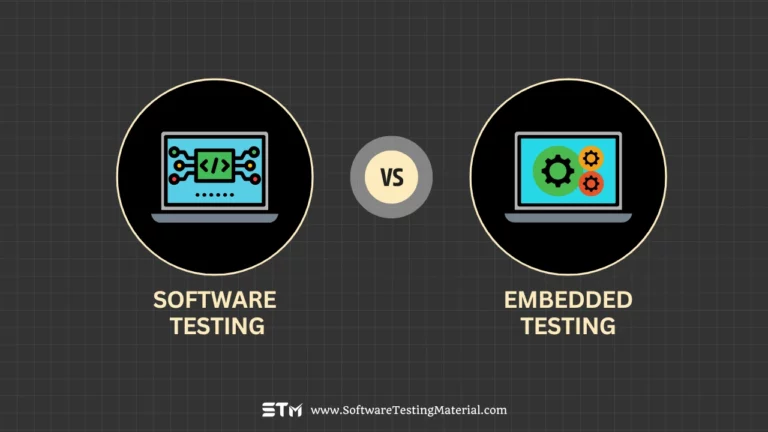Passive Testing in Software Testing: A Comprehensive Guide to Dynamic Testing Methods
In this comprehensive guide, we’ll explore what is passive testing in software testing, its importance, and how to perform to build robust, user-friendly applications.
What is Passive Testing?
Passive testing is a software testing technique where testers observe and analyze the system’s behavior without directly interacting with it. Unlike active testing, which involves inputting data, running test cases, and monitoring outcomes, passive testing focuses on monitoring logs, reports, or system activities to gather information about how a system performs under real-world conditions.
This method is commonly used when direct interference with the system is not possible or desirable, such as in production environments. It is especially useful for detecting unexpected issues, analyzing previous failures, and ensuring the system operates as intended without manual interaction. Passive testing typically involves tools that capture and analyze system data, like log analyzers or performance monitoring software.
Example of Passive Testing
Imagine a web application that handles customer orders. Instead of actively entering test orders to check its functionality, passive testing would involve reviewing the logs to see how real customer orders are processed. For instance, you may check whether any transactions failed, how long it took for orders to be confirmed, or if there were any errors recorded during peak traffic.
Another example could be monitoring server performance during a video streaming application’s peak usage times. By analyzing system statistics such as CPU usage, memory consumption, and error logs, you can identify potential issues like server overload or slow response times, all without disrupting user activities.
Passive testing is a valuable approach for ongoing system evaluation, particularly when examining behavior under normal operating conditions. It complements active testing by giving insights into real-world performance and stability.
The importance of Passive Testing
Passive testing is crucial because it helps to evaluate a system’s performance and reliability without interfering with its normal operations. By observing the system in its natural environment, passive testing provides real-world data that reflects how the system behaves under typical conditions. This approach can identify hidden issues, such as slow performance during specific times, unexpected resource usage, or intermittent errors, that might not be discovered through active testing alone.
Another significant advantage of passive testing is its ability to monitor long-term trends. For example, tracking metrics over time, such as server load or user activity, can reveal patterns and help predict future problems, like capacity constraints or system degradation. This type of testing is especially useful for systems that need high availability, as it avoids introducing any disruptions during the testing process.
Furthermore, passive testing enhances overall system maintenance by offering developers and engineers a constant flow of data. This information is invaluable for making informed decisions about updates, optimizations, and resource allocation. Since passive testing works silently in the background, it ensures that user experience remains uninterrupted while providing a comprehensive view of system health.
By combining passive testing with other methods, organizations can achieve a more balanced and thorough understanding of their systems. This helps to ensure not only immediate functionality but also the long-term stability and efficiency of applications and infrastructure. Ultimately, passive testing plays an essential role in maintaining reliable, user-friendly, and scalable systems.
Why is Passive Testing performed?
Passive testing is performed to monitor and analyze systems without interfering with their normal operations. This method is valuable because it allows organizations to gather data and insights about a system’s performance, behavior, and any potential issues in real-time. By observing how the system functions naturally, without introducing additional load or changes, passive testing helps to ensure that the system remains stable and continues serving users effectively.
One of the main reasons for performing passive testing is to detect anomalies or unexpected behaviors within a system. These issues might not always be noticeable through active testing methods but can be identified by closely examining the system’s logs, network traffic, or other outputs. This proactive approach often allows teams to address issues before they escalate into significant problems that could disrupt operations or impact users.
Additionally, passive testing is crucial for compliance and security monitoring. It helps organizations ensure that their systems meet regulatory requirements and identify any unusual activities that could point to potential security threats. By continuously gathering data, passive testing provides a clear picture of the system’s health and safeguards sensitive operations.
Overall, passive testing is performed to enhance system reliability, maintain smooth operations, and ensure a secure and stable environment for both users and the organization. It complements other testing methods while preserving the integrity of the system.
When Should Passive Testing Be Used?
Passive testing should be used in situations where maintaining the normal operations of a system is critical. Since passive testing does not interfere with the system, it is ideal for environments that require high availability, such as financial systems, healthcare networks, or communication platforms. It is also highly effective when monitoring systems in real-time to ensure smooth and uninterrupted operations.
Another important use case for passive testing is when an organization wants to analyze their network’s security without risking disruptions. By using passive testing, potential vulnerabilities, unusual activity, or signs of a security breach can be identified without exposing the system to potential risks. This makes it a valuable method for ensuring system safety while maintaining business continuity.
Passive testing is also beneficial for long-term monitoring to track system performance and reliability over time. For example, organizations can monitor servers, networks, or applications to collect data, identify patterns, and address issues proactively before they escalate. Furthermore, it is useful during compliance audits, as it allows teams to assess systems against regulatory standards without affecting regular operations.
Overall, passive testing is the right choice whenever non-invasive monitoring is needed to protect stability, reliability, and security while minimizing risks of downtime.
Steps to perform Passive Testing
- Define the Objectives: Start by identifying the purpose of the passive testing. Determine what you aim to achieve, such as monitoring system performance, ensuring compliance with standards, or detecting potential vulnerabilities. Clear objectives will guide the testing process effectively.
- Set Up Monitoring Tools: Choose and configure appropriate monitoring tools or software to collect data passively. The tools should be capable of capturing logs, network traffic, or performance metrics without altering the system. Ensure that the tools are properly installed and configured to operate in a non-intrusive mode.
- Identify the Data Sources: Determine the specific systems, applications, or networks you intend to monitor. Ensure all necessary access permissions are in place to collect data from these sources. Examples of data sources include server logs, network packets, or performance metrics.
- Collect Data Passively: Begin data collection by allowing the tools to observe and gather information from the system during normal operations. Ensure no active interaction is performed during this step to avoid interfering with the system’s functionality.
- Analyze the Data: Review the collected data to identify patterns, anomalies, or potential issues. Look for irregularities in performance, security vulnerabilities, or deviations from expected behavior. Use automated analysis features provided by the monitoring tools if available, for efficiency.
- Document Findings: Record the results of the analysis in a detailed report. Highlight any identified issues, and include the patterns or metrics that indicate potential risks or non-compliance. Well-documented findings are valuable for troubleshooting and future reference.
- Act on Insights: Share the findings with relevant teams or stakeholders. Collaboratively decide the steps required to address the issues or improve the system’s reliability and security. Since passive testing does not involve direct changes, the corrective actions are taken after the testing phase.
- Repeat Regularly: Perform passive testing on a regular basis to ensure ongoing monitoring and early detection of issues. This periodic testing helps maintain system stability and keeps it in line with operational and regulatory requirements.
By following these steps, teams can effectively conduct passive testing and gain valuable insights while preserving system integrity.
Advantages of Passive Testing
Passive testing provides several notable advantages that make it a valuable approach in various technical and operational scenarios:
- Non-Intrusive Nature: One of the key benefits of passive testing is that it does not interfere with live systems. Since it involves monitoring and analyzing data without making direct changes, there is no risk of disrupting ongoing operations or affecting system performance. This makes it particularly useful for critical systems that require continuous uptime.
- Real-World Observations: Passive testing allows teams to observe actual system behavior in real-world conditions. This eliminates the possibility of testing in artificial or simplified environments, providing accurate insights into how the system operates during normal usage. It captures data that reflects real user interactions and network conditions.
- Cost-Effectiveness: Unlike active testing, which can often require additional resources, tools, or test environments, passive testing typically uses existing infrastructure and monitoring tools. This reduces costs associated with setup, execution, and maintenance, making it more accessible for organizations with limited budgets.
- Early Detection of Issues: Passive testing aids in identifying issues such as network bottlenecks, system errors, or security vulnerabilities before they escalate into serious problems. By continually monitoring the system, it ensures that teams can respond promptly to address potential risks or inefficiencies.
- Compliance and Regulatory Benefits: For industries that have strict regulatory or compliance requirements, passive testing serves as a reliable method to maintain system integrity while still fulfilling monitoring and reporting obligations. Since it is non-disruptive, it helps organizations adhere to legal frameworks without compromising operations.
- Supports Long-Term Monitoring: Passive testing is ideal for long-term system monitoring because it runs continuously in the background without interrupting the system. This helps in capturing trends, analyzing patterns, and identifying recurring issues over time, enabling better decision-making and planning.
By capitalizing on these advantages, passive testing provides a safe, practical, and cost-efficient way to monitor and improve system performance without interrupting critical operations.
Conclusion
Passive testing is a method used to monitor and analyze systems without interfering with their normal operations. It involves collecting data from the system as it runs naturally, which helps identify issues, track performance, and detect patterns over time. This approach ensures that critical operations are not disrupted while still providing valuable insights for optimization and improvement. Overall, passive testing is a reliable, non-intrusive, and cost-effective way to ensure systems work efficiently and effectively.






